We’ve all been there: you’re enjoying an article, diving into research, or just browsing for fun when suddenly, you hit a paywall. A pop-up appears, telling you that to read more, you need to subscribe or sign up for a free trial that you know you’ll forget to cancel.
It’s frustrating, especially when you just want to read one piece without committing to a subscription. Paywalls are becoming more common as publishers try to stay afloat in a challenging media landscape. But there are ways to access the content you want without breaking the bank—or the rules.
In this guide, I’ll explore some practical and legal methods to get past paywalls while keeping in mind the importance of supporting quality journalism. Let’s find a way to get the information you need!
But first, an important disclaimer. The information provided in this blog post is for educational and informational purposes only. It is not intended to promote or encourage actions generally considered illegal, such as bypassing paywalls or access controls used by digital publications and media companies. You should be aware that the legal consensus is that bypassing paywalls is considered circumventing copyrighted works and may violate laws like the Digital Millennium Copyright Act (DMCA).
How to Read Articles Behind Paywalls (TL;DR)
- Use an AI like ChatGPT ⇣
- Use a browser extension for Google Chrome or Firefox ⇣
- Use a web app like 12ft Ladder ⇣
- Use the Spaywall app ⇣
- Use an archive site ⇣
- Use Google Search ⇣
- Manually bypass a paywall ⇣
- Bypass Paywalls Using Your Library Card ⇣
But what is a paywall exactly, and is it possible to get around it? Read on to find out more about the different types of paywalls and how to bypass them.
Paywalls have become increasingly common in the digital media landscape. Studies show that newspapers lose an average of 30% of their daily pageviews after introducing a paywall. This significant drop in traffic highlights the impact these barriers have on reader access.
But why do publishers use paywalls? Simply put, it’s about survival. As ad revenues decline, digital publishers face tough financial challenges. Paywalls offer a way to generate income directly from readers, helping to fund quality journalism.
While paywalls can be frustrating for readers, they play a crucial role in supporting the creation of reliable, well-researched content. As we explore ways to access information, it’s worth considering how we can balance our need for free access with the importance of sustaining quality journalism.
How to Get Around Paywalls
There are two main categories of paywalls: client-side and server-side paywalls. This may sound like unnecessary tech jargon, but it’s essential to understand the difference because it will affect how you can get around the paywall.
A client-side paywall loads content to your browser first, then checks if your IP address has permission (i.e a subscription) before displaying the content. If the user doesn’t have permission, then the website will display a pop-up or overlay informing the user that they need to subscribe.
In other words, the content has already been loaded – it’s simply hidden behind an overlay. It’s easier to use tools and tricks to get around a client-side paywall because you simply need to extract the HTML
On the other hand, it’s harder to get around a server-side paywall. The only way to do it is to make the website think your computer is a search engine bot.
Let’s look at a few ways you can try to bypass paywalls and access the content you need.
1. Use AI like ChatGPT to Get Around Paywalls

You have probably heard about the artificial intelligence (AI) chatbot called ChatGPT. ChatGPT-4 is currently the latest version of OpenAI’s LLM.
But you probably didn’t know that ChatGPT can read articles behind paywalls.
For this to work, you need to be a ChatGPT Pro subscriber and have the WebRequests plugin enabled.
When you have enabled this ChatGPT plugin, you can use a simple prompt like this to be able to read the entire article:
fetch and print the entire article
[link to article]
2. Use a Google Chrome or Firefox Extension
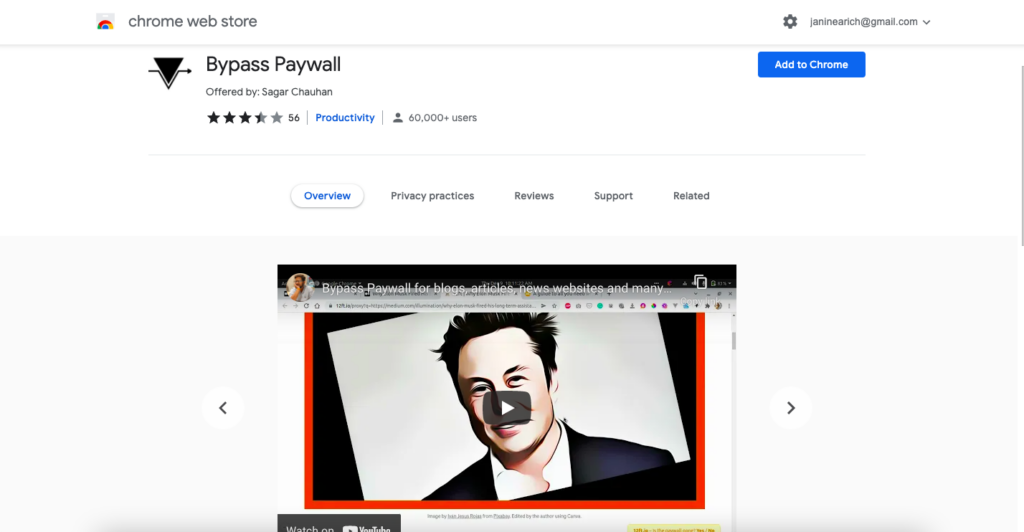
Accessing news articles on news websites can be a great way to stay informed about current events, but paywalls can be a frustrating obstacle to overcome.
A hard paywall can prevent access to news articles altogether, but there are ways to remove paywalls easily. One method is to use a paywall bypass extension available for web browsers like Google Chrome.
This extension can automatically detect paywalls and bypass them, allowing users to access news articles for free. By using a paywall bypass, readers can easily access news articles without worrying about hitting a paywall and being blocked from accessing content.
There are extensions for both Google Chrome and Firefox that enable your browser to get around paywalls.
Google Chrome’s paywall bypassing extension is called Bypass. This extension was recently removed from the Chrome Web Store, but you can install it manually. Find the installation instructions here.
Bypass works by accessing the cached version of the website, which can’t be blocked by a paywall. Installing Bypass is as simple as a few clicks, and it’s an effective trick for accessing paywalled content.
There is another Chrome extension called Unpaywall, this Chrome app lets you read articles behind a paywall even if you don’t have a subscription.
To install it, open the Extensions page in Chrome, type “Unpaywall” in the search bar, and click the Add to Chrome button.
Another effective Google Chrome extension for getting around paywalls is Reader Mode. Although Reader Mode isn’t technically a tool for bypassing paywalls (it formats articles differently to make for a more comfortable, distraction-free reading experience and includes dyslexia-friendly reading tools), it’s generally successful at accessing content beyond the paywall, too.
If you’re a Firefox user, you can use the Bypass Paywalls Clean addon for Mozilla Firefox. It has a simple, free, one-click installation process, and is very effective at getting around paywalls.
At the same time, Bypass Paywalls Clean’s “About this extension” section advises users who regularly use their tool to access content from the same website to think about paying for a subscription because “free press can’t be sustainable without funding.”
Finally, you can give Hover a try. Hover is an open-source browser extension, meaning it will work with most browsers, and was created to get around paywalls. This extension was recently removed from the Chrome Web Store, but it can still be found and installed from GitHub.
3. Use a Webapp (like 12ft)
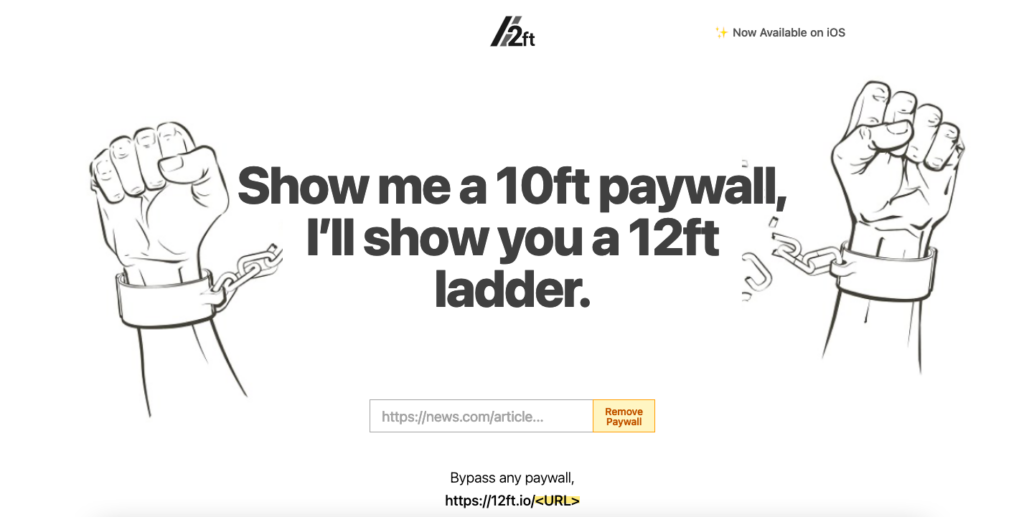
Web browsers like Google Chrome allow users to access the internet and find information easily. The address bar in a web browser is where users can enter the URL or search term they want to look up.
Search engines like Google can also be used to find information by entering search terms in the address bar or search box. Additionally, web archives can be a great resource for finding information that may no longer be available on the internet.
Chrome extensions can also be used to enhance the browsing experience, with many extensions available to improve search results, block ads, or even modify web pages. Overall, web browsers and their associated tools offer many ways to find and access information on the internet.
If you don’t want to use a browser extension, you can give 12ft Ladder a try. 12ft Ladder is a web app designed to help you remove paywalls easily and quickly, and doesn’t require you to download or install anything on your computer or browser.
Simply go to the web app and enter the URL of any paywalled page you’re trying to access. And boom: 12ft Ladder will unlock it for you. It doesn’t get easier than that!
4. Use the Spaywall App

Spaywall is the longest-lasting paywall remover extension in the Chrome store. It works as both a web browser extension (for Chrome, Firefox, and Microsoft Edge) or as a website app (if you are on a mobile device).

What makes this tool different from other paywall bypassing apps is that it links out to existing archived copies of articles, and it never modifies the site or messes with cookies or the webpage, meaning it’s 100% legal to use and doesn’t break any site’s ToS.
This tool has a free plan and a premium plan, that comes with more features.
We tried the premium plan and it works great, and well loved the all-hours access feature and that paywalled content get’s pulled from seven news archive sources.
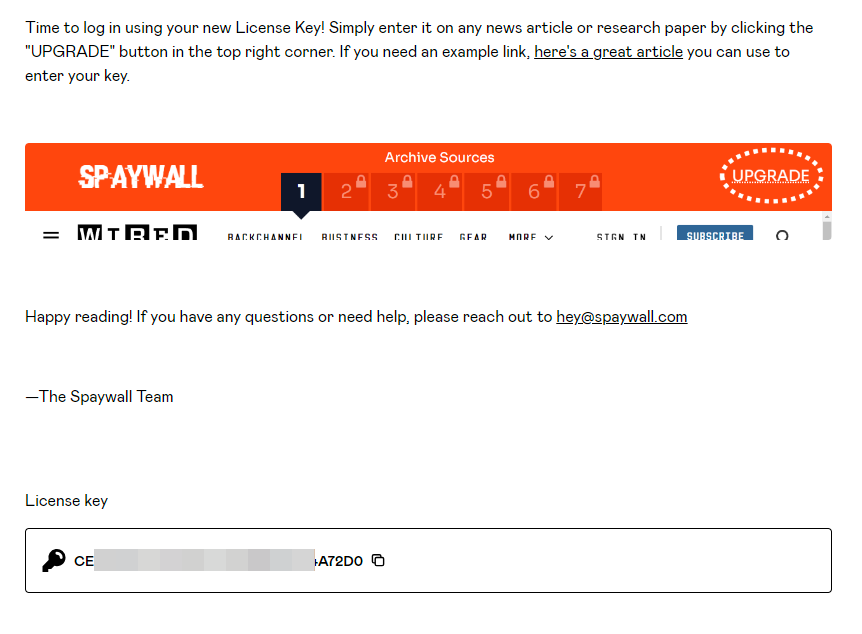
4. Use Archive.today or the Wayback Machine
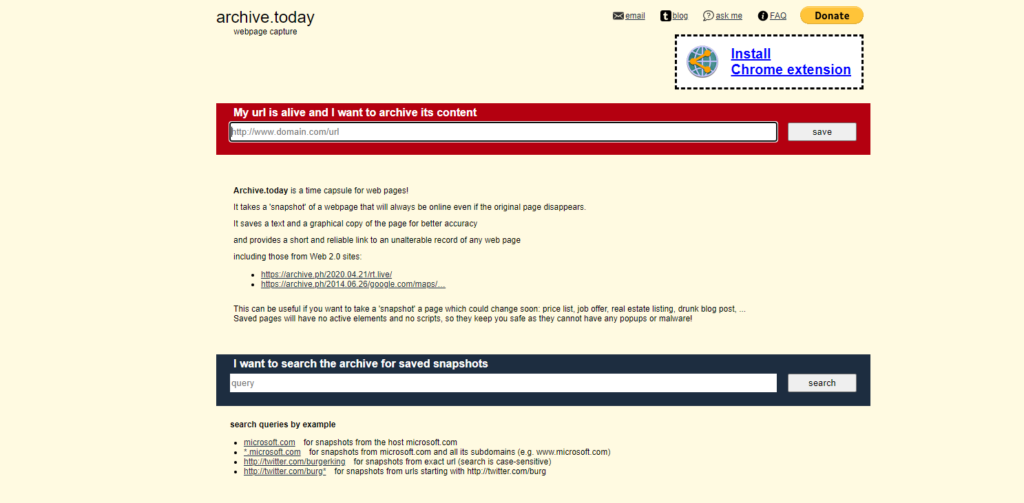
Internet archive sites such as Wayback Machine or Archive.today provide users with an archived version of the paywalled site.
Archives are a bit like a time capsule for the internet, showing you previous versions of pretty much any web page. The archived version contains the full article but isn’t protected by the paywall.
Using an internet archive site to get around paywalls couldn’t be easier. You just have to copy the link to the paywalled site and paste it into the archive site’s search bar.

When you hit ‘enter’, the archive site will search for the archived version of the article attached to the URL you entered. If it finds it, it will automatically open it for you.
Another way to read articles offline and bypass the paywall is to convert the web page into PDF.
5. Paste an Article’s URL into Google
Search for the article’s URL in Google’s search results. Depending on the news site, you can sometimes read the article if you access it directly from its link on the Google search results page.
Here is an example of an article on the Financial Times hidden behind their paywall.

But when you copy the news article’s URL, paste it into Google, and search for it, it comes up as accessible and available to read.

In this example, this news article is available to read for free via the University of Cambridge library website.

If you still get a paywall, try right-clicking the link in Google and selecting Open link in incognito window, Open link in InPrivate window, and Open Link in New Private Window.
6. Manually Bypass Paywalls
If the first three methods don’t work for you, you can try manually bypassing paywalls. This method involves configuring your web browser’s user-agent to become Googlebot. By pretending to be Google you can bypass paywalled content.
Developer mode is a useful feature available in many web browsers, including Google Chrome, that can be used to modify web pages and experiment with different configurations.
With developer mode, users can inspect the code of a web page, identify potential issues, and make changes to the page’s HTML, CSS, or JavaScript. This can be particularly useful for web developers or designers looking to improve their skills or test out new features.
However, developer mode can also be used by non-developers to experiment with different page layouts or remove unwanted elements. Overall, developer mode is a powerful tool that can help users better understand and modify the web pages they interact with.
This method is a good way to bypass some client-side paywalled news sites (but it won’t work for sites like WSJ, Washington Post etc with advanced paywall technologies),
This method is a little more complicated, so I’ll outline the steps clearly here:
- Open up Google Chrome in Incognito Mode and go to the paywalled page.
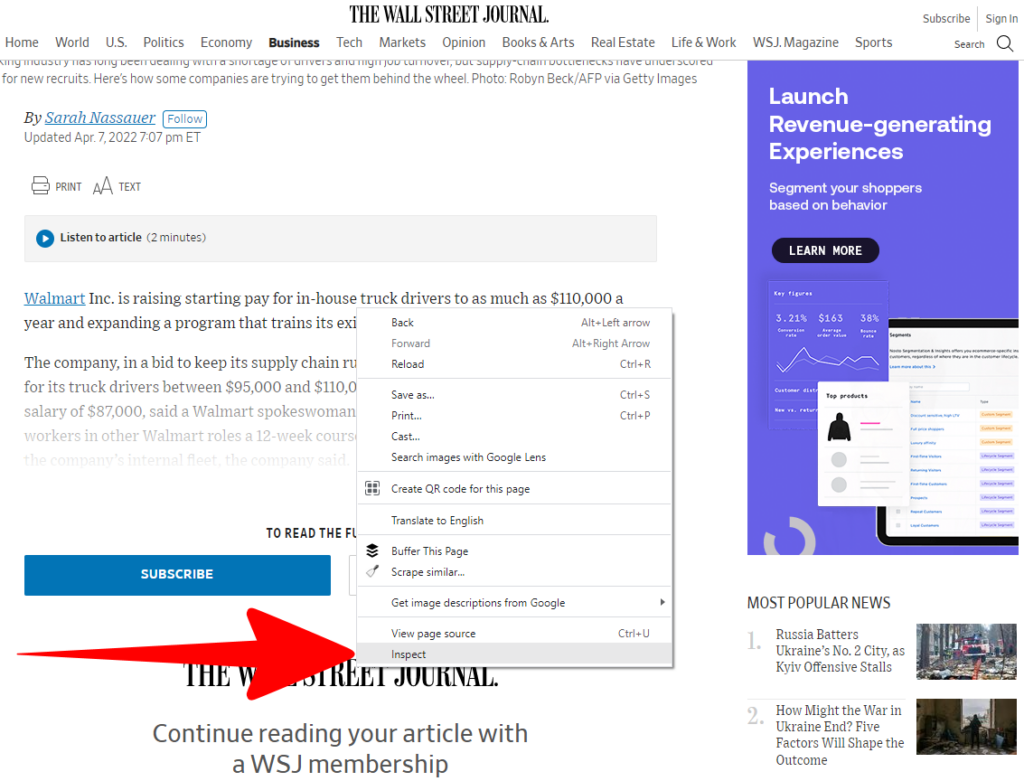
- Open the console. When you right-click on an article, you should see an option that says “inspect.” Click on it to open the console.
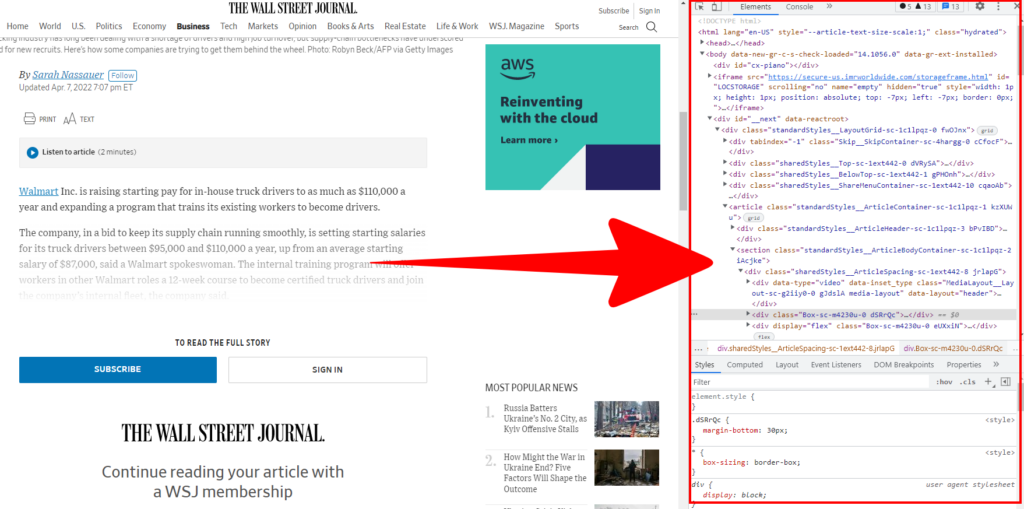
- Go to “More Tools,” then “Network Conditions.” You should see an option for “more tools” in the console. Click on that, then select “network conditions.”
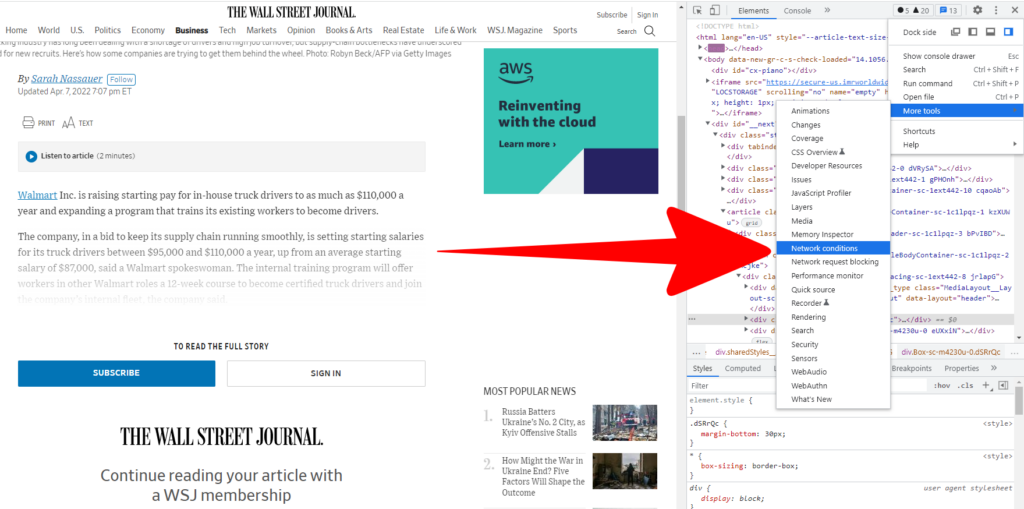
- Select a User Agent. Next to the category “user-agent”, select “Googlebot” from the dropdown menu.
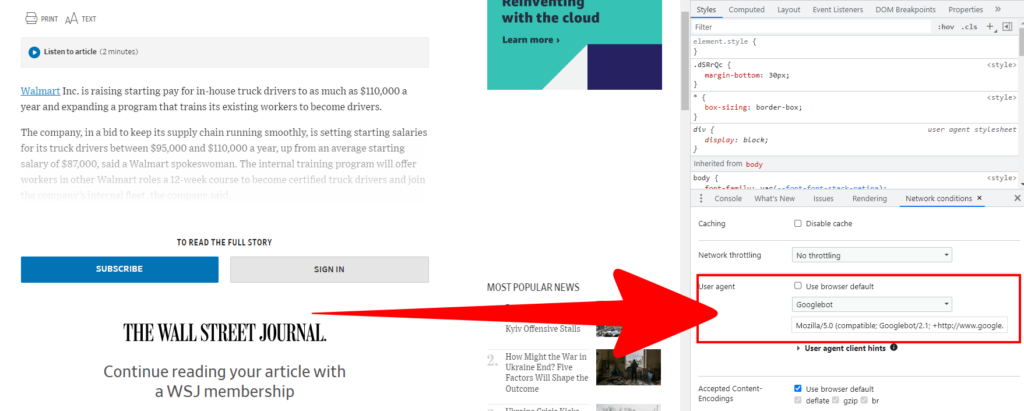
- Hard refresh. Finally, hard refresh the page by clicking on the swirling arrow symbol next to the forward/back buttons.
And that’s it! However, it should be noted that this method doesn’t always work because websites have wised up and increasingly started to block it.
You can perform these functions manually or download an extension that will do it automatically.
As always, internet security is an arms race, and methods that worked once may not be effective for very long. Still, it’s worth giving it a try.
7. Bypass Paywalls Using Your Library Card
As a last resort, you can use a library card to bypass paywalled content online. As a library card holder, you get complimentary online access to all sorts of content and information, including access to WSJ, Washington Post, New York Times, Financial Times and many others.
Using your local library card gives you online access to current and past issues of national and local newspapers, and popular magazines, as well as historical newspaper archives and news from all around the world.
Most libraries provide free and unlimited access to newspapers and magazines’ digital content both in the Library as well as remotely online from your computer.
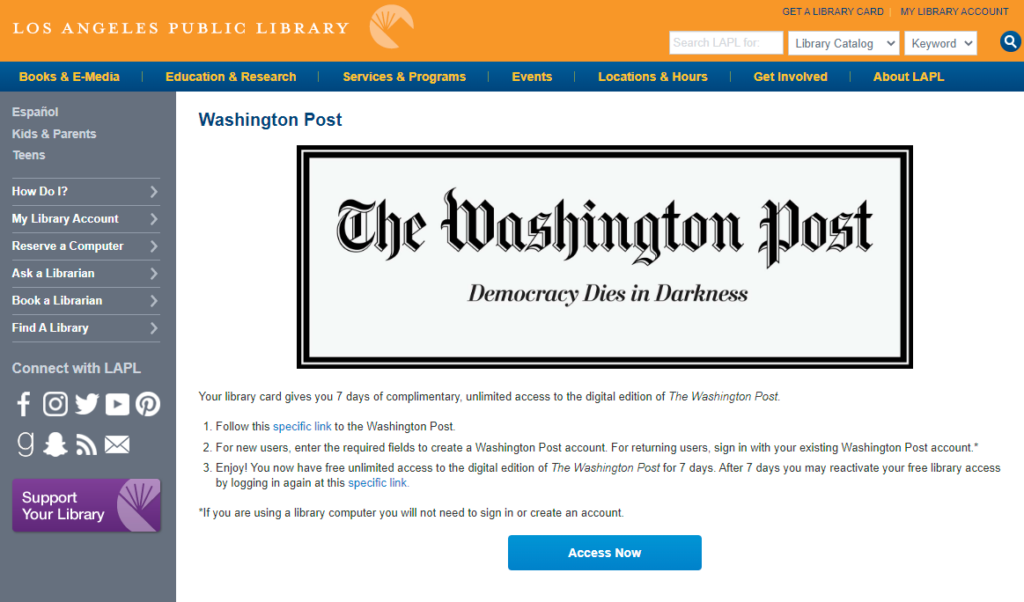
What Are Paywalls?

A paywall is a commonly-used tool that allows publications and websites to restrict content to paying readers only. If an article is hidden behind a paywall, it can’t be accessed without paying for a subscription.
When you hit a paywall, you’ll often be told that you’ve reached your monthly limit of free articles, or prompted by a pop-up window to subscribe in order to continue reading. Generally, you won’t be able to continue scrolling after the paywall pops up.
Paywalls come in several shapes and sizes. There are soft paywalls, which allow users to access a limited number of articles per month without a subscription (for example, The New York Times allows access to 10 free articles a month).
There are also hard paywalls that don’t let you access any free content.
Popular news sites with paywalls:
- The New York Times
- The Washington Post
- The Wall Street Journal
- Game Informer
- Financial Times
- The Athletic
- The Guardian
- Nikkei
- The Economist
- Bild
- The Sunday Times
- The Telegraph
- The Atlantic
- Corriere Della Sera
- Le Monde
- The Boston Globe
Websites that use either soft or hard paywalls often have sophisticated tools to try to keep freeloaders out. So, does that mean it’s impossible to get around their defences? Thankfully, it’s not!
Wrap Up
You know that feeling when you stumble upon an intriguing article, only to hit a paywall and feel that wave of frustration wash over you? I remember the last time it happened to me, I was excited to read about a new discovery in AI, but there it was, a subscription prompt blocking my way.
It’s a common experience in today’s digital landscape, where paywalls are everywhere. While they can be annoying, they also serve a purpose. They help support the journalists and publishers who work hard to bring us quality content.
As we navigate these barriers, let’s remember that there are ways to access the information we crave without compromising our values. By using the methods we’ve discussed, we can stay informed while also supporting the journalism that matters. So the next time you encounter a paywall, don’t let it get you down – there are always options to explore!
If you’ve run into a paywall and can’t or don’t want to sign up for a subscription, there are a few methods you can try to bypass the paywall and access the article you want to read. You can use a web tool like a browser extension or a web app, or an archiving tool like Archive.today or Wayback Machine.
If for some reason those methods don’t work for you, you can try manually bypassing a paywall by changing the website’s console configurations. However, this method has mixed results (it’s a bit complicated, and it doesn’t always work).
Overall, it’s best to bypass paywalls only when absolutely necessary, as many news websites and writers depend on income from paid subscriptions for their livelihoods. If used with discretion, these methods can help you access the information you need without breaking your budget.
